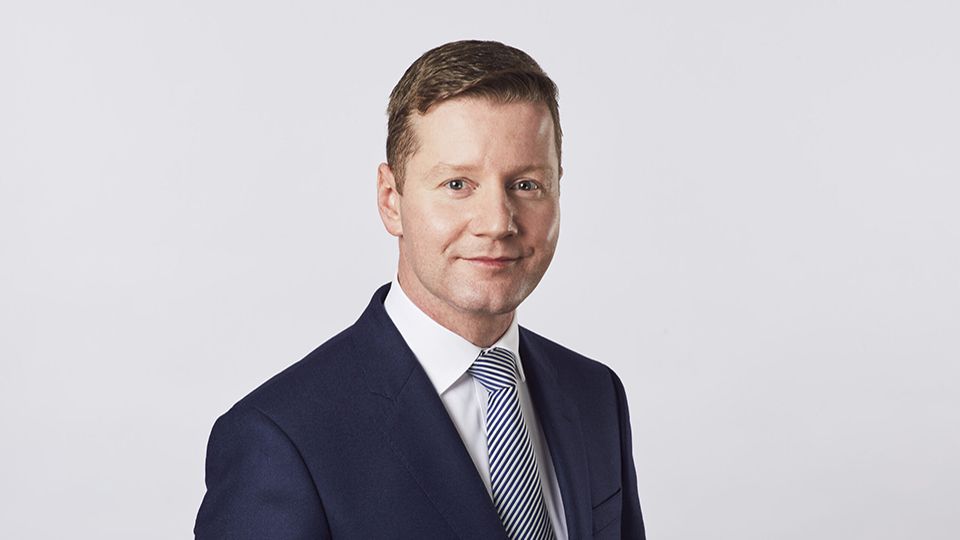In the wake of COP28 and the renewed focus on the UN’s Sustainable Development Goals (SDGs), Richard Mattison, vice chair at S&P Global Sustainable, discusses the difficulties investors have when incorporating SDG metrics into investment portfolios, and looks toward the future to identify how this space will evolve.
What are your thoughts on the UN’s SDGs? Some asset managers think aligning portfolios with them is a moral imperative, but others are more sceptical despite seeing the aspiration behind them.
I don’t think there are many people arguing against the framework of the SDGs. Almost every country has signed up to them at this point, and there are hundreds of different metrics designed to help those countries measure their progress on all 17. The problem is that they’re not all relevant for companies, which is why investors struggle a little bit when translating those metrics to company-level reporting.
What we tend to find is that a lot of the metrics have to be stripped out, which is why you’ll hear people in the finance and business industries question whether what’s left represents the right framework to truly measure progress. But, in the same way that it’s important that we have the global climate goals agreed at Paris – which companies also have a vested interest in – so too is it important that companies take stock of the sustainable development goals.
Organisations like the UN Global Compact are working very hard on building a consensus in the business and investment communities on how we look at some of these elements. And we ourselves have ways of using that high-level framing but applying it to create datasets on how you measure progress on the SDGs in the private sector.
What challenges are there in collecting data to accurately report on progress toward the SDGs, and are some of them easier to report on than others?
It’s not easy, no, because at the end of the day, as I said, you have to discard a lot of the measures agreed at the country level under the UN framework. But it’s not that much different in the climate context. Countries have Nationally Determined Contributions (NDCs) which aren’t necessarily applicable to a company, but we do have science-based targets which are much more relevant in a business context that have been developed out of that. That’s an exercise which we need to go through with the SDGs.
Social outcomes can be measured too, but part of the challenge there is that social outcomes are often subjective. You can apply scientific rigour to measuring climate outcomes, because there’s a direct causation link between doing things in the real economy to reduce emissions and actually seeing those emissions decrease. But what is a social norm in one country is not necessarily a social norm in another, nor do the people who live there wish it to be in some cases. The SDGs should really represent a common ground, given that most countries have signed up to them, but mapping that to business activity can get challenging.
In the early days of climate being a part of the conversation, many investors used to tell me that it wasn’t their responsibility to save the planet, purely to deliver financial returns. But that’s not the case today, most now say it is their job to both reduce emissions and deliver returns, alongside all the other elements of fiduciary duty. Why? Because reducing emissions is linked to reducing risk.
Additionally, we also now have regulations in Europe and other places that are forcing people to be transparent about what the impact of their fund is on the planet and society. We need these types of mechanism to provide clear frameworks of disclosure that give stakeholders, customers and investors the ability to consistently assess progress in alignment with the SDGs. That’s the next step.
Where are investment portfolios having the most impact in terms of aligning with the SDGs, and how are fund managers optimising their portfolios to meet them?
Portfolio managers have typically focused on either climate change risks or ESG risk. But there’s a third category – impact – which is much more geared towards delivering positive societal outcomes and which is more suited toward delivering on the SDGs as a result. This is the reason why, when you see Europe implementing laws about greenwashing, the majority of those funds are not in the “Article 9” category, which requires evidence of driving a positive impact in the real world. Most are in the ‘general purpose’ bucket; integrating valuable sustainability intelligence but not actually with a focused mandate to save the planet. Those funds are usually aligned to ESG framing, not impact investment per se. Consequently, the market for impact funds is a degree of magnitude smaller than ESG and climate.
It’s going to be interesting in the future, because I think most people generally want to create some kind of impact with their investments, and many who may have invested in ESG funds did so with a view to drive an impact but just didn’t understand the term. So, we’ll see what happens going forward.
We sit in the middle of a transition from the old economic models and ways of thinking that drove the industrial revolution, to the new ways of thinking that will drive the energy transition, the transition of food systems, the development of nations, etc. It’s the largest megatrend of this decade, if not the next as well, and a lot of investors are contemplating how to develop funds that drive real world outcomes while not compromising on the expected returns of that portfolio. That’s the fundamental question.
The evolution of language to better reflect how people want to invest is fascinating. I’ve had conversations with asset managers who say that younger people especially have a very different way of thinking about investments.
We’re moving to a position where things are changing very rapidly, and I agree with you in that one of the things that investors and banks are getting worried about is the point at which we hit peak millennial earnings. It’s hugely exciting, but it’s also a very different demographic to previous demographics, and that’s coupled with a pretty obvious need in most parts of the world to do things differently to the way that they have been done before.
I’m optimistic though that we will reshape and change things enough so that we really understand what a good transition looks like, that’s the critical thing. Then we can dedicate the right amounts of capital to avoid some of the pitfalls and drive real world outcomes.
The World Economic Forum’s annual Davos conference is around the corner. What opportunities will present themselves as a result of an increased focus on the SDGs?
One of the main themes will be around generative AI and the use of technology, and when you couple that with location-based assessments, then there are some interesting opportunities.
So, to explain, some people have said things like “a tonne of CO2 in one place is the same as a tonne of CO2 in another place”. I disagree with that statement, and the reason why is that although a tonne of CO2 creates the same impact on global warming, the impact of global warming is considerably different depending on where in the world you are. Likewise, the way in which you’re taxed and regulated on your CO2 emissions varies significantly across the board.
Technology like generative AI, satellites, etc. offers hope when you consider the need to understand the world in more detail, given the myriad of complexities involved with things like supply chains. Not least because it gives us access to information which companies do not usually disclose, driving a disintermediation of corporate communications where we no longer have to rely on what a company says every year to really understand how it is performing.
As an example, there are quant funds that can predict Walmart’s earnings before they release their earnings figures by analysing how full their car parks are using satellite imagery. And this can be relatively easily translated to the world of sustainability, where you would be able to look at where a company operates and create a model showing the damage they’re causing to nature, or the risks they may face from a physical climate change impact perspective. That’s an interesting intersection to watch for at Davos.








